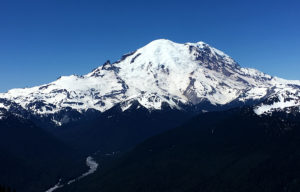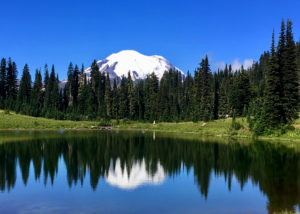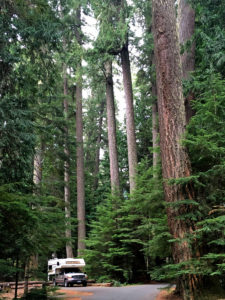Our family recently enjoyed a delightful afternoon at Crystal Mountain where we rode the Mt. Rainier Gondola. Crystal Mountain is located in western Washington’s Mt. Baker/Snoqualmie National Forest. Our party of eight rode together in one gondola as we soared with the eagles up 2,000 vertical feet in twelve-minutes to the summit of Crystal Mountain. At the top we marveled at the unparalleled view of Mt. Rainier and the Cascade Range. From interpretive signs visitors can identify other well-known mountains such as Mount. St. Helens, Mt. Adams and Mt. Baker, all visible from the summit.
We lounged in sling-back chairs and contemplated the spectacular views. Dogs are allowed on leash in the gondola and also on trails. The gondola is wheelchair accessible.
While at the top we enjoyed a delicious lunch at the Summit House, the highest elevation restaurant in Washington State.
Interpretive guided walks are also offered on select days when visitors can learn about the local history, geology, wildlife and more. During the summer months several moderate to strenuous hiking trails are available for close-up views of wildflowers, wildlife and lakes. For hiking and other specific information, visit https://www.crystalmountainresort.com/summer/summer-activities/
Within a thirty-minute drive from Crystal Mountain is Silver Springs Campground, situated on the banks of scenic White River, just outside Mt. Rainier National Park’s North Arch entrance. The campground has 56 campsites, all with picnic tables and fire rings. The campground makes lovely headquarters to enjoy the park and its opportunities for fishing, hiking and picnicking, as well as access to surrounding areas. Camping reservations may be made through
www.recreation.gov or phone 877-444-6777.




